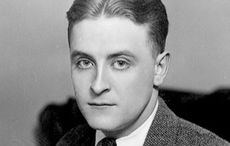| Michael Tubridy and James Keane. Source: Chiffandfipple.com |
There was no roaring fire in the fireplace underneath the mantle which proudly displayed an artistic wooden plaque colorfully painted by Kanturk artist Vincent Crotty with the expression “ Ceol na hEireann” on top of it.
Though an autumn chill was in the air on that night, those who gathered for the house concert at Claire and Gregg Burnett’s home in Fairfield felt the warmth immediately upon entering this very popular place for the artists seeking a quality airing for their music.
It was the fireside music that would fill the friendly Fairfield family room as well as the rekindled friendship of half a century that characterized the recent tour de force presented by James Keane and Michael Tubridy to delight of hard-core fans of the pure drop who also came along to Long Island City, Blauvelt, Philadelphia and Baltimore a few weeks ago.
Between the jigs and the reels, the audience was treated to stories from Tubridy and Keane that traveled back over half a century to the earliest days of the Irish traditional music revival revealing the long hard road the music took to its present day vitality.
Among those present were the Monaghan piper Mattie Connolly from that same peer group who recalled the very early days of wireless radio and the RTE show "The Job of Journeywork" hosted by Ciaran MacMathuna, a pioneer in that medium for trad music.
The short 15 minute program brought people round the radio from the fields and cow houses to get their fix of their native music, deemed too unworthy and old-fashioned for the general populace. But tunes were learned by ear from the program, and names like Mrs. Crotty of Kilrush — where Tubridy hailed from — gained recognition among a “wider” audience.
The want of employment and better economic prospects brought so many from the country 'up to Dublin,' including Tubridy, in the 1950s, but they didn’t leave traditional music behind them.
Rather, they sought out kindred spirits who gathered in clubs on Church Street or Thomas Street to play music and dance a few sets.
Parallel to this, the Keane brothers (Sean and James), who were reared in Drimnagh by parents from Longford and Clare, revered the music. They reinforced with household sessions and frequent visits to the country playing alongside men and women who kept the music alive.
It certainly wasn’t cool to be playing “bog music” for the teenagers which, until that time, had no practical advantage either culturally or economically according to the vast majority in Ireland, which really was still in search of its national identity.
Sean and Michael Tubridy played a lot of music with Paddy Moloney, influenced by the game-changer Sean O’Riada adding respectability to the music. Those who played it and would be founding members of the Chieftains who made it a profession later on spurred on by the folk music revival and a greater interest in Irish traditional music as part of that realm.
The sixties in Dublin, however, was a crossroads musically as people from all over the country lived and worked there and found pockets around town to play in and dance.
Places like the Mrs. Crotty Club were veritable breeding grounds for Hall of Fame musicians and characters, and those who kept the old country set quadrilles alive.
For Keane and Tubridy it was a meeting ground for them and the Castle Ceili Band musicians who would garner an All-Ireland gold medal in 1965, setting a standard that still remains very high.
There was a decided Clare swing to the band with the Keanes, Tubridy, John Kelly, Sr. and Joe Ryan among the musicians. Playing for all the Clare Sets at the Mrs. Crotty Club influenced their sound as well.
Tubridy didn’t take the path of a professional musician when the Chieftains went full-time in the mid-1970s, choosing instead to stick with his engineering work which gave him and his young family a more secure future. He held onto his love of the music and dance as an avocation when time and circumstances allowed.
Keane went off to America over four decades ago and played in many of the New York houses with many of the great musicians, and was lured to Canada and Nova Scotia with the band Ryan’s Fancy before returning to New York to settle permanently.
Both Tubridy and Keane went on to have illustrious careers in the Irish music scene on their own terms, playing when it suited them and under circumstances that made it a pleasure rather than a chore.
But their brief tour together again brought alive the times and memories when traditional music was pure and sweet, and played for its own enjoyment. That was invaluable in rescuing it from obscurity in a nation that was ready to unload that rich cultural heritage.
If it is healthy and vibrant today, it is only because of the gallant efforts of men like Michael Tubridy and James Keane.




Comments